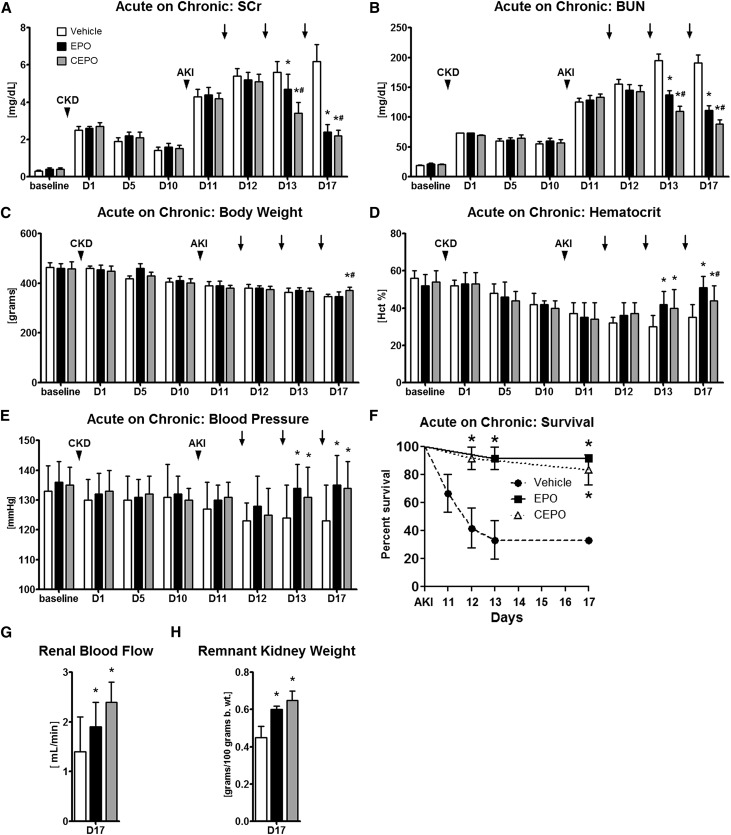Figure 1.
CEPO is more effective than EPO in improving renal function after AKI superimposed on CKD. CKD was induced in male Sprague–Dawley rats by right nephrectomy and ligation of two to three branches of the left renal artery. This led to an increase in (A) SCr and (B) BUN and a decrease in (C) animal weight and (D) hematocrit (Hct). (E) Systolic BP did not change over the first 10 days. Ten days after selective renal artery branch ligation, AKI was induced by clamping of the remaining renal pedicle (35 minutes), and animals were treated 1 day later (vehicle, 5000 U/kg EPO sc, or 5000 U/kg CEPO sc) on days 11–13 after CKD. Both EPO and CEPO treatments led to lower (A) SCr and (B) BUN levels compared with vehicle-treated animals, with CEPO-treated animals showing (A and B) small but significantly greater improvements in kidney function than the EPO-treated groups and (C) better preserved body weights. (D) EPO treatment resulted in significantly higher Hct levels than in vehicle or CEPO-treated groups, whereas CEPO therapy resulted only in a moderate rise in Hct. (E) Systolic BP levels and (F) 7-day survival were higher in both CEPO and EPO groups compared with those in the vehicle-treated group. Compared with controls, both EPO- and CEPO-treated animals had (G) improved total renal blood flows on day 17 as well as (H) higher remnant kidney weights. Black bars indicate EPO treatment, gray bars indicate CEPO treatment, and white bars indicate vehicle treatment. Black arrowheads indicate CKD or AKI surgery as labeled. Black arrows indicate treatments on days 1–3. *P<0.05 compared with the vehicle control; #P<0.05 for CEPO compared with EPO.

